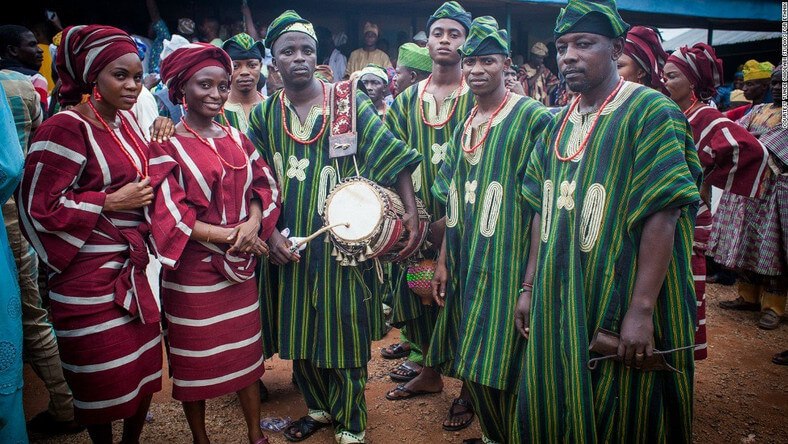
The Africans Known As ‘The Nago’
“Nago” as an ethnic identifier is linked to the African Yoruba language group. In addition to Saint Domingue, the term was used to describe Africans in Brazil, Louisiana, and the British West Indian colonies. Some American and Cuban documents identify this group as “Lucumi.” There are 401 advertisements in the slave database that identify individuals as Nago, 18 of which are part of the “nouveau” category. Most of the individuals who can be matched in the ship manifests originated at ports in the Bight of Benin: Onim-Lagos, Porto Novo, Whydah, Badagry, and Pogo. Two out of every ten slaves leaving the Bight of Benin ended up in Saint Domingue, while most of the rest went to Bahia in Brazil (cited by Gomez in Reversing Sail).
About 20% of African slaves originated in the Bight of Benin region during the Atlantic slave trade. Of the slaves in Saint Domingue from the Bight of Benin, the largest ethnic group was the Arada and the Nago-Yoruba population comprises 26.2%, according to data collected by Philip D. Curtin. Lovejoy’s study of the ethnic composition of slaves in Saint Domingue includes demographic details about the Nago population, indicating they had a significant presence in the colony.
Ethnic concentrations of the Yoruba (Nago) in Saint Domingue, from “Ethnic Designations of the Slave Trade and the Reconstruction of Trans-Atlantic Slavery”, Paul E. Lovejoy
French historical sources differ on whether the Nago and Yoruba were used by Europeans as interchangeable group names, or whether Nago was considered a subgroup of Yoruba. In 1880, the Catholic missionary Pierre Bouche published Études sur la langue Nago ou Yorouba (a contemporary review viewable here). In it he identifies a population of 3 million people on the “slave coast” who call themselves Nago but who are called Yoroubas by their neighbors the Haoussas. In Édouard Foà’s 1895 history of Le Dahomey (accessible here), the two terms are treated separately. « Les noms de Nago, Fon, etc. désignent, non pas une race discrète d’individus, mais une peuplade qui parle un même idiome. Il existe, comme nous l’avons dit, des hommes physiquement différents dans chacune de ces tribus.” Nago referred to as both the general language of the Dahomey region and a separate smaller group; Yorouba, however, is considered a “race distincte” and is identified as a territory to the east of Dahomey. (The state of Dahomey was conquered by France and incorporated into French West Africa from 1894 until 1960.)
Robin Law writes that these ethnicities should be taken as “fluid and subject to constant redefinition.” In his analysis, the West African ethnic group that now identifies as Yoruba did not identify as such before the 19th century. However, he argues that the “Nago” terminology was not disconnected from West African usage or purely a creation of the diaspora. The word in its earlier form, Anago, was used by a small Yoruba group in West Africa, and the word was likely extended from there to refer to a larger population. Law traces how the term was used by various sources in the context of the slave trade and the conflicting accounts of the location of Nagos and the hierarchy of different kingdoms. However, the process by which the term Nago came to be generalized in French sources is not entirely clear; furthermore, the broad use of the term by West Africans may have actually resulted from the feedback of its usage in the Americas. The “general application [of Nago] in the diaspora, therefore, seems to reflect transformations in ethnic identities consequent on the displacement of slaves across the Atlantic rather than continuity from West African usage.”
Neither “Yoruba” nor “Oyo,” a related group, are featured in the Marronnage database. However, “Dahomey” – presumably a variant spelling of Dahomey – does appear, in two instances as a nation and twice used as a slave’s name.

